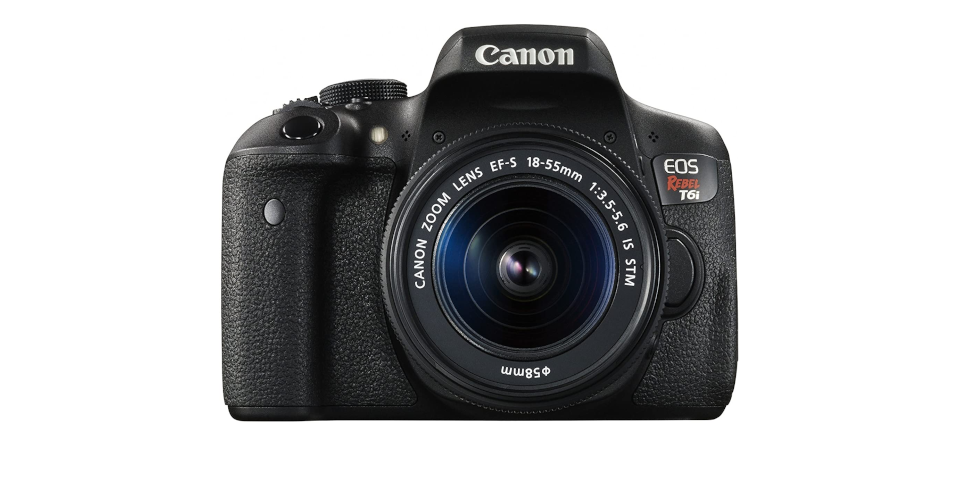6 Best Canon T6i Lenses in 2020
Canon’s Rebel-series T6i has been out for five years now. However, it still garners the attention of newcomers and photographers looking for a balanced, affordable DSLR. It has a competent AF system, helps you frame shots with its articulating touchscreen, and takes detailed 24.2MP snaps. The camera comes with a serviceable kit lens, but you’ll soon find that its focal range and optics don’t cut it for more advanced photography.
That’s why we’ve put together an overview of the six best canon T6i lenses you can get today. The glass on offer covers everything from wide-angle to telephoto, including one lens that produces beautiful macro shots. Their prices and stats vary significantly, so take a look at both the reviews and each model’s tech specs to find one you like.
| Budget |
|---|
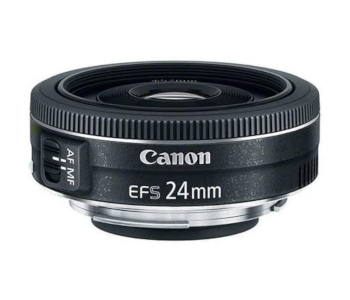 |
| Canon EF-S 24mm f/2.8 STM |
| 4.1/5.0 |
| Type: Standard prime |
| Image stabilization: No |
| Versatile prime lens at a bargain price. |
| Check Amazon |
| Best Value |
|---|
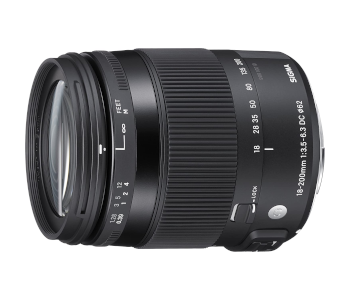 |
| Sigma 18-200mm F3.5-6.3 OS HSM |
| 4.4/5.0 |
| Type: Superzoom |
| Image stabilization: Yes |
| Controlled distortion and color fringing. |
| Check Amazon |
| Top Pick |
|---|
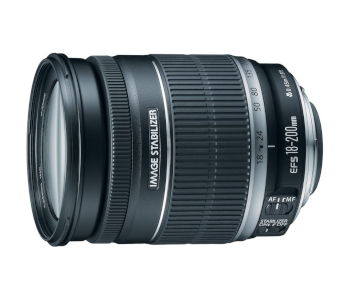 |
| Canon EF-S 18-200mm f/3.5-5.6 IS |
| 4.6/5.0 |
| Type: Superzoom |
| Image stabilization: Yes |
| Produces sharp images with nice bokeh. |
| Check Amazon |
Canon T6i Lenses Comparison Table
| Image | Product | Overall Rating | Image quality | Build quality | Features | Price |
|---|---|---|---|---|---|---|
 | Canon EF-S 18-200mm f/3.5-5.6 IS | 4.6 | 4.4 | 4.6 | 4.7 | Check Price |
 | Sigma 18-200mm F3.5-6.3 OS HSM | 4.4 | 4.3 | 4.4 | 4.5 | Check Price |
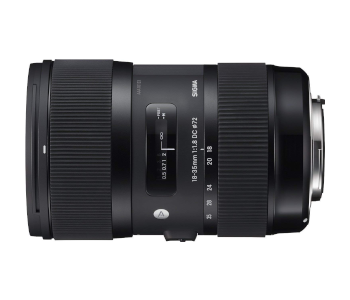 | Sigma 18-35mm F1.8 Art DC HSM Art | 4.5 | 4.7 | 4.5 | 4.3 | Check Price |
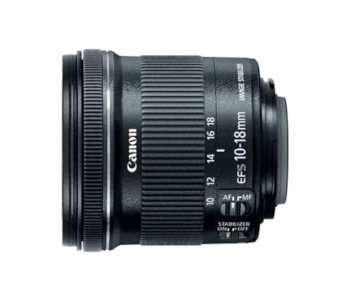 | Canon EF-S 10-18mm f/4.5-5.6 IS STM | 4.3 | 4.4 | 4.3 | 4.3 | Check Price |
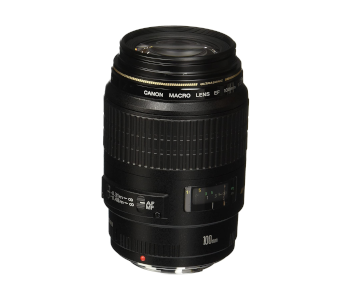 | Canon EF 100mm f/2.8 Macro USM | 4.3 | 4.4 | 4.2 | 4.3 | Check Price |
 | Canon EF-S 24mm f/2.8 STM | 4.1 | 4.2 | 4.0 | 4.2 | Check Price |
1. Best Overall – Canon EF-S 18-200mm f/3.5-5.6 IS
Editor’s Rating: 4.6/5
Do you have money to spend on only one, extremely versatile Canon lens? If that’s the case, the EF-S 18-200mm f/3.5-5.6 IS should be a no-brainer. The lens features a wide focal range that lets you shoot everything from landscape and architecture to bugs and sports. It’s well built, has excellent image stabilization, and will let you shoot in bright daylight without fear of flaring.
Overview of Features
Canon’s all-purpose superzoom is designed with balance and functionality in mind. It sits well on the T6i, never causing the camera to tip over even when zoomed in completely. The lens has a metal mount but is otherwise made out of quality plastic and 16 glass elements in 12 groups. It has a wide central zoom ring and a responsive focus ring on the outer edge you can easily turn with a single finger.
Three physical controls are on the lens’ sides. AF/MF and image stabilization switches are on the left. The autofocus is driven by a micro motor and not suitable for filmmaking since the action is audible. However, it’s quick in good lighting and stays on target well. Keep in mind that this kind of setup doesn’t let you make manual adjustments while in AF mode, though.
The image stabilization is outstanding; it can compensate for four stops, allowing you to lower the shutter speed and get brighter pictures in low light. Lastly, there’s a zoom lock switch on the right that prevents the barrel from extending while not in use.
Lack of flaring and admirable sharpness are the EF-S 18-200mm f/3.5-5.6 IS’s best optical qualities. Don’t hesitate to include sunstars in your photos as there’s minimal flaring even If you don’t use a protective hood. While low, the maximum aperture of f/3.5 is still wide enough for creamy bokes when you’re trying to separate a subject from the surroundings. Central sharpness is high throughout while the corners are soft at 18 and 135mm. The situation markedly improves as you narrow the aperture and zoom in.
What We Didn’t Like
The EF-S 18-200mm f/3.5-5.6 IS has some of the most pronounced barrel distortion and chromatic aberration issues we’ve seen. Both are most evident at 18mm and drop to more manageable levels after that. The distortion type changes to a noticeable pincushion effect at 50mm but gets better with zooming. Luckily, shooting in RAW and editing your photos will get rid of these problems.
| Tech Specs |
|---|
| Dimensions: 3.1 x 3.1 x 4 in. |
| Weight: 1.3 lbs. |
| Type: Superzoom |
| Minimum focal length: 18mm |
| Maximum focal length: 200mm |
| Maximum aperture: f/3.5 to f/5.6 |
| Minimum aperture: f/22 to f/36 |
| Minimum focus distance: 1.4 ft. |
| Angle of view: 74° 20′ to 7° 50′ |
| Image stabilization: Yes |
| The Pros |
|---|
| Excellent all-around lens |
| Minimal flaring |
| Produces sharp images with nice bokeh |
| Well-built and balanced |
| The Cons |
|---|
| Bad barrel and pincushion distortions at 18 and 50mm respectively |
| Pronounced chromatic aberration at either end of zoom range |
2. Best Value – Sigma 18-200mm F3.5-6.3 OS HSM
Editor’s Rating: 4.4/5
Canon’s own all-purpose lens is useful but expensive considering the T6i’s age and price. That’s why it’s smart to turn to third-party manufacturers like Sigma if you want comparable performance at half the cost. The 18-200mm F3.5-6.3 OS HSM displays fine optical properties, including resistance to flaring and minimal color fringing. It’s straightforward to handle, comes with image stabilization, and performs well at either end of its wide focal length.
Overview of Features
Sigma’s superzoom is a well-constructed lens with a metal mount and lightweight plastic body. Its 72mm filter thread doesn’t rotate as you’re zooming, so it’s a good choice if you often shoot with polarizers. The zoom and focus rings are of similar thickness. Both are responsive but have limited rotation angle and require precision to handle. The physical controls are the same as on Canon’s superzoom; stabilization and focus switches along with a zoom lock toggle. All three are positioned close to each other and larger for better handling.
The HSM in the name stands for Hyper-Sonic Motor, a technology that makes the AF motor silent and accurate. The Canon-compatible version of Sigma’s lens doesn’t take advantage of it, relying on a micro motor instead. The performance loss is insignificant as AF performance is adequate, and the sound of the motor barely audible. The only loud aspect of the lens is turning OS or Optical Stabilization on as a distinct click follows it. It’s well worth it, though, since using OS improves stability by three stops.
Controlled chromatic aberration and negligible distortion are the 18-200mm F3.5-6.3 Contemporary DC Macro OS HSM’s most notable optical properties. As we’ve seen with Canon’s superzoom, this kind of lens usually struggles with both. Chromatic aberration on Sigma’s lens is much less pronounced, especially the sharp red kind that’s harder to correct. You can get pleasingly blurry bokeh at any focal length, and vignetting is only an issue at 18mm until you reduce the aperture to f/5.6.
What’s Bad About It?
The 18-200mm F3.5-6.3 Contemporary DC Macro OS HSM has inconsistent edge sharpness. Things start off soft at 18mm and hit the sweet spot between 50 and 100mm when the aperture is set between f/8 and f/11. Edge sharpness then nosedives, only to pull itself back up at the end of the telephoto range. The autofocus sometimes hunts for subjects, even in favorable light. The micro motor doesn’t allow manual correction in AF mode, so you’ll have to switch between it and AF mode when fine-tuning.
| Tech Specs |
|---|
| Dimensions: 2.8 x 2.8 x 3.4 in. |
| Weight: 13.2 oz. |
| Type: Superzoom |
| Minimum focal length: 18mm |
| Maximum focal length: 200mm |
| Maximum aperture: f/3.5 to f/6.3 |
| Minimum aperture: f/22 to f/40 |
| Minimum focus distance: 1.3 ft. |
| Angle of view: 76.5° to 8.1° |
| Image stabilization: Yes |
| The Pros |
|---|
| Excellent value for the money |
| Controlled distortion and color fringing |
| Controls are easy to reach |
| Negligible vignetting at minimum focal length |
| The Cons |
|---|
| Inconsistent edge sharpness |
| No manual override in AF mode |
3. Sigma 18-35mm F1.8 Art DC HSM Art
Editor’s Rating: 4.5/5
Sigma’s 18-35mm F1.8 Art DC HSM Art lens caused a stir upon release as it was the first of its kind to feature a consistent f/1.8 aperture at all focal lengths. It’s still among the top T6i glass seven years later. The lens features outstanding bokeh, consistent sharpness, and next to no chromatic aberration. It’s the ideal choice for urban explorers or event photographers who want the ability to switch from wide-angle shots to portraits in no time.
Overview of Features
Two things immediately come to mind when examining this lens’s physical specs – weight and build quality. A constant aperture of f/1.8 requires more glass and, therefore, more heft. However, the lens doesn’t feel front-heavy and strikes the right balance between bulky yet made well and light but flimsy. Its outer shell is a combination of metal and rubber with few plastic bits thrown in to cut down on the weight.
The lens doesn’t extend when zooming and has no image stabilization, so the only control apart from its grippy rings is the focus toggle. Speaking of focus, the AF on the Sigma 18-35mm F1.8 Art DC HSM Art is superb. It’s silent and effortlessly zeroes in on subjects whether you’re seizing the golden hour or capturing a city’s nightlife. Expect accurate focus nine times out of ten, even with minimal light.
The Sigma 18-35mm F1.8 Art DC HSM Art’s sharpness is in a league of its own. You’d think that the corners would be soft at its maximum aperture, but the lens maintains razor-sharp detail throughout the frame. It peaks at f/4.5 and f/7.1, but the difference between these and more extreme f-stops is minimal. Comparable lenses made by Canon and other third-party companies display weaker results even going so far as to be softer two steps down than Sigma’s lens when wide open!
A wide max aperture translates to better-lit shots and faster shutter speeds, letting you capture quick movement without motion blur. You can also produce artful portraits where the large, smooth bokeh serves as a visually stunning backdrop for your models.
Are There Drawbacks?
The autofocus will be less reliable out of the box than this review would suggest. The old firmware is at fault, which is why you’ll also need to buy Sigma’s USB dock to update it via your computer.
| Tech Specs |
|---|
| Dimensions: 3.1 x 3.1 x 4.8 in. |
| Weight: 1.8 lbs. |
| Type: Standard zoom |
| Minimum focal length: 18mm |
| Maximum focal length: 35mm |
| Maximum aperture: f/1.8 |
| Minimum aperture: f/16 |
| Minimum focus distance: 11 in. |
| Angle of view: 76.5° to 44.2° |
| Image stabilization: No |
| The Pros |
|---|
| World-class sharpness across aperture size and focal range |
| Exceptionally well built |
| Great low-light performance |
| Beautiful bokeh |
| The Cons |
|---|
| Has glaring autofocus issues you can only resolve by purchasing a USB dock for firmware updates |
4. Canon EF-S 10-18mm f/4.5-5.6 IS STM
Editor’s Rating: 4.3/5
Travelers should never leave home without a wide-angle lens, and the EF-S 10-18mm f/4.5-5.6 IS STM is by far the best when it comes to price and performance. It’s among the lightest lenses of its kind, offers image stabilization, and is tack-sharp throughout its narrow focal range. Add to that reliable and quiet autofocus, and you’ve got a wonderful choice for both landscape photography and documentary filmmaking.
Overview of Features
The first thing you’ll notice about this lens is how light it is; 8.7 ounces puts it at half the weight of most competitors. None of its dimensions exceed three inches either, so bringing it along to shoots of any kind isn’t a hassle. The lightness is achieved through an all-plastic body as even the mount isn’t metal. There’s no cause for concern, though, as the plastic used is durable. Physical controls are limited to AF/MF and image stabilization switches.
The autofocus is driven by a stepping motor and quick to respond to subjects’ change in position. It’s not prone to hunting in low light and executes movements quietly when needed. So much so that you can use the lens for establishing shots without worrying about noise. Image stabilization is unusual on wide-angle lenses, but it’s well-executed and lets you shoot handheld at crawling shutter speeds with excellent results.
We were pleased with the EF-S 10-18mm f/4.5-5.6 IS STM’s overall sharpness. Expect outstanding central sharpness regardless of aperture or focal length, and don’t worry about unfavorable light since edge detail is crisp even at f/4.5. Stay between f/5.6 and f/8 for best results. Barrel distortion is noticeable but correctable in post, while pincushion distortion is only slightly visible at 18mm. Flaring isn’t cause for concern, but try to exclude the sun on bright days.
What We Didn’t Like
The EF-S 10-18mm f/4.5-5.6 IS STM doesn’t come with a lens hood. It doesn’t move while autofocusing, so you can attach a polarizing filter to compensate, but having to purchase a hood separately is still annoying. Vignetting is the bane of many wide-angle lenses, and this one doesn’t handle it well either. The corners of an image are almost two stops darker than its center at 10mm, forcing you to choose compositions that will compensate for the difference.
| Tech Specs |
|---|
| Dimensions: 2.9 x 2.9 x 2.8 in. |
| Weight: 8.5 oz. |
| Type: Wide-angle |
| Minimum focal length: 10mm |
| Maximum focal length: 18mm |
| Maximum aperture: f/4.5 to f/5.6 |
| Minimum aperture: f/22 to f/29 |
| Minimum focus distance: 8.7 in. |
| Angle of view: 107° 30′ to 74° 20′ |
| Image stabilization: Yes |
| The Pros |
|---|
| Lightweight yet solidly built |
| Exceptional sharpness |
| Works well in low light thanks to image stabilization |
| Quiet and accurate autofocus |
| The Cons |
|---|
| Lens hood sold separately |
| Pronounced vignetting when zoomed out |
5. Canon EF 100mm f/2.8 Macro USM
Editor’s Rating: 4.3/5
T6i owners interested in macro work have two choices from Canon. Either their L-series lens which costs upwards of $800, or the slightly less optically sound but still good EF 100mm f/2.8 Macro USM. There’s no need to pay a premium unless you’re planning to switch to a full-frame Canon down the line as this lens has everything you’ll need for stunning photos of bugs, flowers, and quarters.
Overview of Features
Canon’s macro lens is compact and light, considering its focal range and intended use. The plastic shell feels sturdy, and the focus ring is responsive. Physical switches include a focus toggle as well as a focus limiter. The latter is particularly useful since it lets you determine the max focusing distance in two stops, which speeds focus up considerably. The outer thread is universal and accepts filters since the lens remains stationary while focusing.
The EF 100mm f/2.8 Macro USM comes with an Ultrasonic Motor capable of zeroing in on creatures and small objects in the blink of an eye. It’s quiet enough not to startle bugs and rarely requires manual adjustment. This is a true 1:1 macro lens, meaning that a subject’s size is accurately portrayed when the lens is at its minimum focusing distance of one foot.
Solid is the most appropriate word when referring to the macro lens’ optics. Flaring is well controlled, and there’s some vignetting that disappears as soon as you step down from f/2.8. One inch is enough to let in enough light for the lens to be usable indoors, and eight blades make for pleasing and rounded bokeh on high f-stops. Sharpness is reasonable, although lacking in the corners until you move past f/4.5.
What’s Bad About it?
The EF 100mm f/2.8 Macro USM has pronounced color fringing when shooting high-contrast images. Abruptly transitioning from light to dark leaves green & purple fringes. You might not be able to get rid of these entirely during editing, so plan your shots accordingly. You’ll also have to work in a controlled environment or use a tripod since there’s no image stabilization.
| Tech Specs |
|---|
| Dimensions: 3.1 x 3.1 x 4.7 in. |
| Weight: 1.3 lbs. |
| Type: Macro lens |
| Focal length: 100mm |
| Maximum aperture: f/2.8 |
| Minimum aperture: f/32 |
| Minimum focus distance: 1 ft. |
| Angle of view: 24° |
| Image stabilization: No |
| The Pros |
|---|
| True 1:1 magnification |
| Has a focus limiter |
| Quick and accurate autofocus |
| Fine bokeh and flare handling |
| The Cons |
|---|
| No image stabilization |
| Pronounced color fringing |
6. Best Budget Option – Canon EF-S 24mm f/2.8 STM
Editor’s Rating: 4.1/5
One of Canon’s cheapest lenses is also among the most useful for casual photography with a T6i. The EF-S 24mm f/2.8 STM’s focal length translates to 39mm in full-frame terms and is optimum for indoor shots of parties or kids while holding its own for street and architectural photography too. The sharpness and autofocus are remarkable for such a low-priced lens, and it’s so small that it should never leave your gear bag.
Overview of Features
Pancake lenses are not something Canon is known for, but the EF-S 24mm f/2.8 STM ticks all the right boxes. It’s squat, feather-light, and effortless to use since you’re only dealing with focus controls. The outer thread supports filters, while the inner one is metal despite the lens’ affordability.
A stepping motor drives the autofocus and makes for smooth, silent handling. This is particularly useful for filmmakers since clips recorded with it won’t be jittery. On the other hand, acquiring a target takes more time than with other lenses we’ve tested. It’s not a deal-breaker, but it’s something to keep in mind when dealing with subjects on the move.
A max aperture of f/2.8 lets you snap photos on cloudy days or inside well-lit interiors without losing detail. The aperture has seven rounded blades and produces a nice blur, which helps create a pleasing background. Images are sharper than the EF-S 24mm f/2.8 STM’s price would have you believe and reach peak detail at f/8. Higher and lower aperture values maintain good results, but diffraction starts to degrade the quality at f/16.
Other optical properties are decent as well. Barrel distortion never exceeds one percent and won’t be an issue for real-life photography. Color fringing may show up if the image contains lots of light and dark areas clustered together, but you can do away with it at the editing stage.
Are There Drawbacks?
The EF-S 24mm f/2.8 STM is prone to vignetting when wide open. Light fall-off causes corners to be darker than the center, forcing you to compensate by framing the shot differently or narrowing the aperture so the effect becomes less pronounced.
| Tech Specs |
|---|
| Dimensions: 2.7 x 2.7 x 0.9 in. |
| Weight: 4.4 oz. |
| Type: Standard prime |
| Focal length: 24mm |
| Maximum aperture: f/2.8 |
| Minimum aperture: f/22 |
| Minimum focus distance: 6.3 in. |
| Angle of view: 59° 10′ |
| Image stabilization: No |
| The Pros |
|---|
| Versatile prime lens at a bargain price |
| Lightweight and portable |
| Excellent sharpness and minimal barrel distortion |
| Smooth autofocus great for video |
| The Cons |
|---|
| Strong vignetting at f/2.8 |
| Slow autofocus |
Contents
- Canon T6i Lenses Comparison Table
- 1. Best Overall – Canon EF-S 18-200mm f/3.5-5.6 IS
- Overview of Features
- What We Didn’t Like
- 2. Best Value – Sigma 18-200mm F3.5-6.3 OS HSM
- Overview of Features
- What’s Bad About It?
- 3. Sigma 18-35mm F1.8 Art DC HSM Art
- Overview of Features
- Are There Drawbacks?
- 4. Canon EF-S 10-18mm f/4.5-5.6 IS STM
- Overview of Features
- What We Didn’t Like
- 5. Canon EF 100mm f/2.8 Macro USM
- Overview of Features
- What’s Bad About it?
- 6. Best Budget Option – Canon EF-S 24mm f/2.8 STM
- Overview of Features
- Are There Drawbacks?

